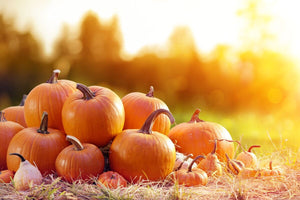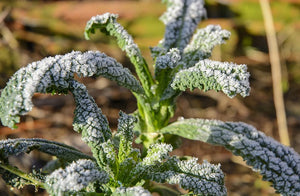Topics
Balsam: How to Grow Impatiens Balsamina Flowers from Seed
ImpatiensAre you looking to add a burst of color to your garden? Annual balsam flowers are a great choice. Impatiens balsamina is also known as Garden Balsam, Rose Balsam, and Touch-Me-Not. These vibrant flowers come in a variety of colors and are relatively easy to grow from seed. This blog post will guide you through the steps to successfully grow annual balsam flowers in your garden. Let's get started!

Which Type of Impatiens Balsam?
There is a difference between Impatiens balsamina and Impatiens walleriana. Annual balsam flowers (Impatiens balsamina) are cup-shaped, unlike other varieties of impatiens. The thick stems are soft with long sawtoothed leaves that can hide the colorful blooms.
The name itself gives some interesting clues about the flower. “Impatiens” and “Touch-Me-Not” both refer to the seed pods. Once the flowers are spent, they develop seed pods. These “impatient” pods are ready to burst and fling their seeds wherever they can. Be careful touching them once they have dried. Even the wind has enough friction to cause the seed pods to burst open. So, “touch-me-not” unless you want to release the seeds.
Pollinators love the colorful cup-shaped balsam flowers. Bees and butterflies will enjoy visiting your balsam plants. Add it to your cottage garden or as a focal flower in a container garden.
Tom Thumb mix is a beautiful heirloom impatiens variety. Its small size is perfect for borders and containers.
How to Grow Balsam Flowers from Seed
Start seeds indoors or directly sow in the garden once temperatures exceed 50ºF.
We prefer to start balsam seeds indoors. This allows us to keep them warm and protected as well as get a headstart on flowers.

Balsam Seed Germination
Plant balsam seeds 1/8” deep.
Warm soil helps germination. Use a heating mat to keep the temperature between 60-70ºF.
Keep seeds moist until they germinate in 14 to 21 days.
Transplanting Balasam Seedlings
Once the seedlings are a few inches tall and have several true leaves, they can be transplanted outdoors. To reduce transplant shock, take time to harden off your balsam seedlings.
Growing Balsam Flowers
These heirloom flowers are easy to grow when you give them the necessary growing conditions. Following these tips will result in the best blooms.
Sun
These tender flowers prefer part shade. Plant garden balsam plants where they can have morning sun and shade in the hot afternoon. They will need at least 6 hours of direct sun.
Soil
Balsam flowers need nutrient-rich soil that drains well. Too much moisture can result in rotting blooms.
Spacing
Space balsam plants 8 to 12 inches apart. The plants will grow 12 to 16 inches high. Individual plants can also be grown in containers.
Watering
Consistent watering is essential for growing healthy balsam flowers. Don’t let the soil dry out between watering. Using mulch can help the ground stay moist.
Fertilizing
Using a slow-release, balanced fertilizer can keep your balsam flowers growing and blooming all summer long.
Pruning and Deadheading
When balsam plants are about 4” tall, pinch out the center to encourage more branching and growth.
Pruning is not necessary, but deadheading will keep the flowers from self-seeding. Remove flowers before they have a chance to form seed pods.

Harvesting Balsam Flowers
If you don’t want balsam to self-sow, it is crucial to harvest the flowers before they are spent. Cut flowers in the morning after the dew has dried and before the sun is hot. You can remove leaves around the blossoms to better display the flowers.
This plant self-seeds easily. “Touch-me-not” refers to how easily the seed pods will burst. If you want to collect seeds to grow next year, put a paper bag under the seed pod before touching it, as it may explode on you, shooting seeds everywhere.
Balsam FAQs
Is balsamina frost-tolerant?
Balsamina is frost tender. This means it needs to be protected from frost. Once the weather turns cold, balsam will stop blooming and eventually die off.
When can I plant balsamina seeds?
Balsam seeds can be planted when all danger of frost is passed. Starting seeds indoors will give you a few weeks headstart on blooms.
Does balsam self-seed?
Balsam flowers will easily self-seed if left to mature on the plant. Once the blossoms have been pollinated, they will go to seed. The seed capsules will burst once they are dry and spread seeds. Cut flowers before they go to seed to keep impatiens from self-sowing.
Is balsam used for medicinal purposes?
Impatiens balsamina has a long history of use in medicine. It has been used to treat scurvy, dysentery, bruises, pain, inflammation in fingernails, and many other things. It is also used as a natural dye.
If you are looking for a tropical-looking heirloom flower, try planting balsam. It will grow strong stems with colorful flowers tucked into long green leaves. Their prolific seed production will give you a continuous supply of new blooms every year.







Leave a comment